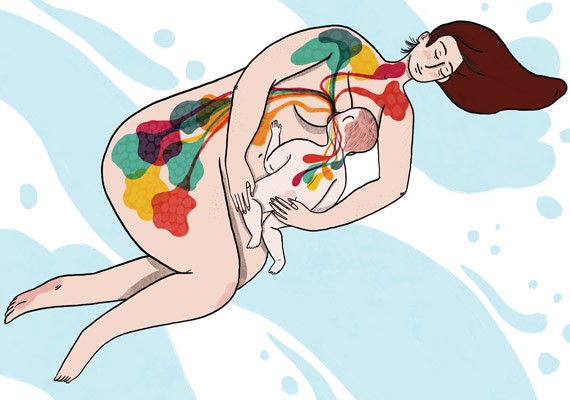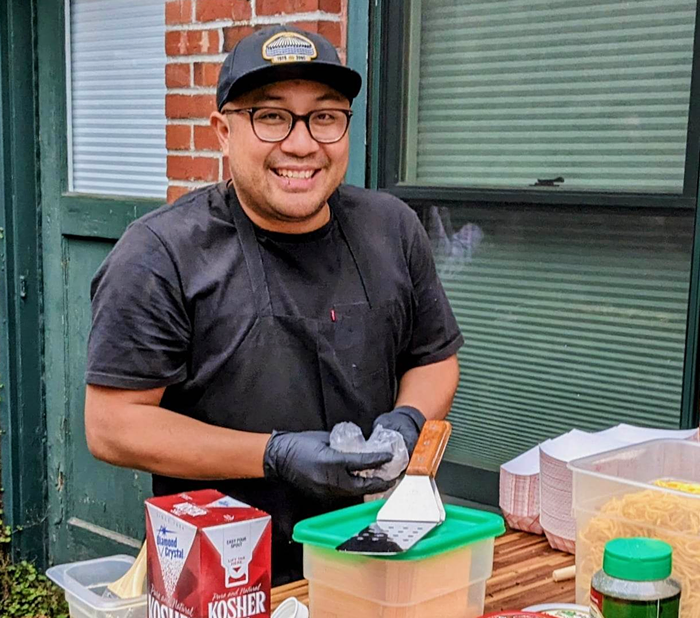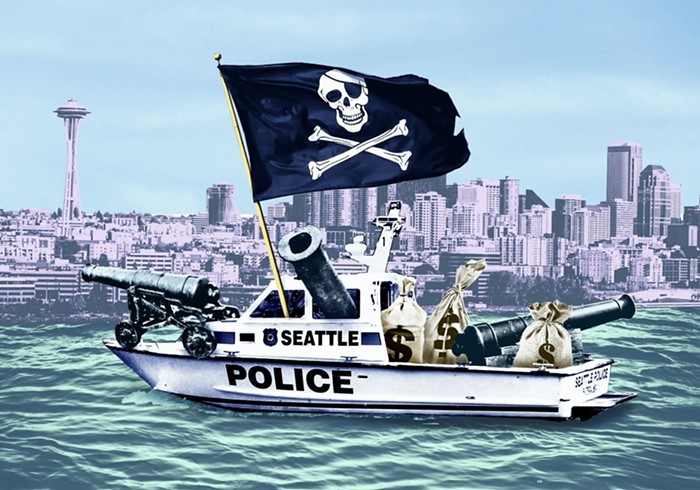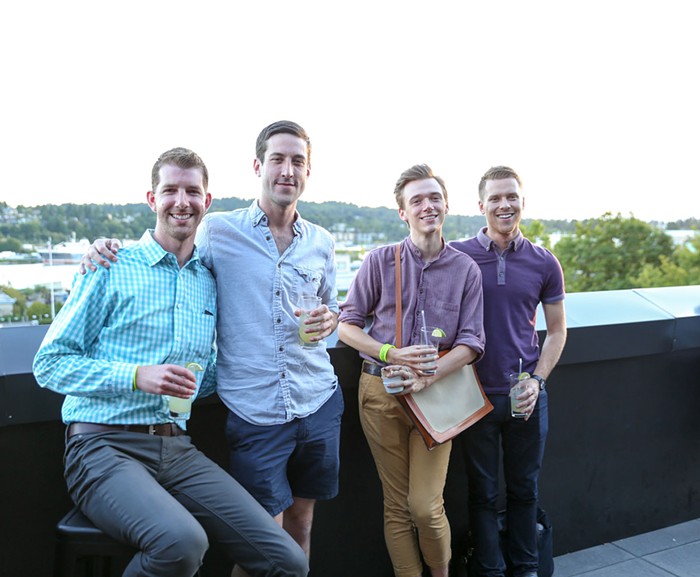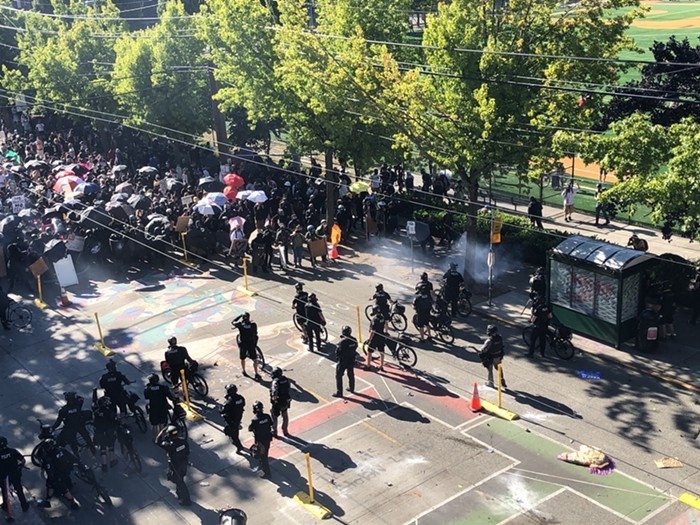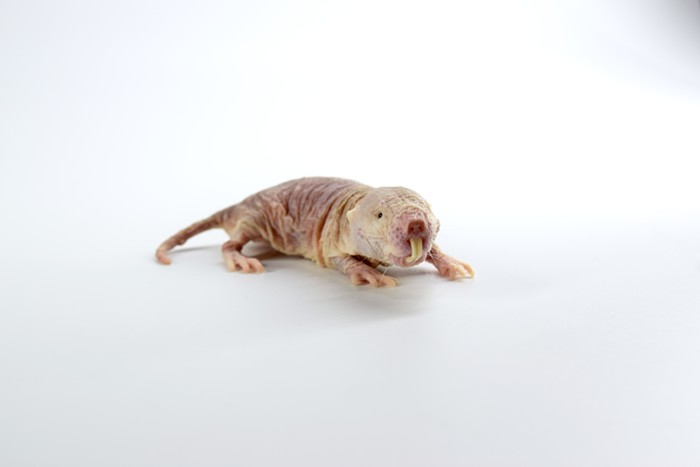
On an overcast day last month, some naked mole rats said their goodbyes to Seattle. The mischief then scampered into a miniature version of their habitat that had been delicately loaded into a minivan, and headed off down Interstate 5 to a new life in California, leaving behind their home at the Pacific Science Center.
The mole rats were the last of the center’s animals to depart, with the pandemic forcing the staff to find new homes for all of their critters over the last few months. Gone are the rats, the axolotl salamanders, the butterflies and centipedes, all sent to institutions and trusted animal-carers along the west coast—an unexpected migration for a wide range of species, each with its own particular re-homing challenges. It was a change that had to happen, staff say, but as anyone who’s ever found a new home for naked mole rats will tell you, saying goodbye was just one of the challenges around their relocation.
“We’re an organization that’s open most days of the year,” says Diana Johns, Vice President for Exhibits & Life Sciences at the Pacific Science Center. “Every single day, it’s noisy. And particularly when you think about school groups, there’s a lot of tapping on glass, vibration, squeals, just a very noisy environment.”
During normal times, the center’s menagerie includes turtles, snakes, stick insects, axolotl salamanders, sea anemones, and more—all of them used to the usual cacophony of life, not unlike animals living in the wild. When attendance abruptly dropped to zero, many of the animals noticed.
For example, Diana says, the snakes: “They weren’t eating as well. They weren’t shedding as well."
And the rats, highly social animals that enjoy interaction with humans: “You could tell—I know this sounds silly, but they seemed kind of depressed. We actually would take turns reading stories to them.”
With the exhibits silent for an unknown span of time, staff began discussing how best to care for the animals, and the difficult decision was made to re-home. The community of exotic-animal experts is tight-knit, and Living Exhibits Manager Sarah Moore drew on her extensive connections with biologists, breeders, and hobbyists to find new homes.
“The interest was immediate,” says Diana. “I was amazed by how many people really wanted centipedes.”
All of the animals were transported by ground, including the mole rats on a particularly epic journey from Seattle to Palm Desert, California. Staff built a miniaturized version of their burrow and transported them by minivan like a passel of soccer-playing kids to The Living Desert Zoo, which remains open and had been planning a mole rat exhibit before the lockdown hit.

The Pacific Science Center isn’t alone in facing unprecedented conditions—the pandemic has forced every cultural center in the world to reflect on their mission this year, and those with living exhibits have faced particular challenges.
“There’s not a great deal of difference for anemones,” says Grant Abel, director of life sciences at The Seattle Aquarium. “For those particular animals that are aware of the environment around them, it’s a world of change … the visual interactive of watching people go by and interacting with guests. Even fish will watch you from the inside and interact occasionally.”
There’s been no re-homing at the aquarium, where the life sciences team has provided regular stimulation for the animals—while also safeguarding against transmitting COVID-19 to the animals, a very real risk. Otters are among the species susceptible to the virus, and the aquarium has implemented additional biosecurity measures to reduce the risk of transmission. So far, there’s been no documented case of transmission at the aquarium involving any species.
Though times are tough, it’s also provided an opportunity to think about what the future might hold. Grant’s currently focused on upcoming projects: The Aquarium’s Ocean Pavilion, now in the planning stages; a new animal care center; revamped animal training programs to facilitate veterinary care. The aquarium’s also planning to house new zebra sharks, which will hopefully produce offspring to repopulate a protected area in the Pacific Ocean, a program that likely would not have moved as quickly as it did if not for the time freed up by the temporary closures.
Over at the Pacific Science Center, "our living exhibits are helping to tell science stories,” Diana says. “I think that pandemics throughout history have forced innovation. It’s not been easy for any of us. But in the last nine months we’ve learned how to become more agile, less risk-averse, we’ve been able to do virtual programming we haven’t dreamt of before. It’s helping us reflect on what the physical reality will be when people come back.”
We’re just wrapping up our call when I ask her if there’s anything else that she wants guests to know about the last few months, and about what the next year holds.
“Whatever we look like in the future…” she says, “we love our animals.”

